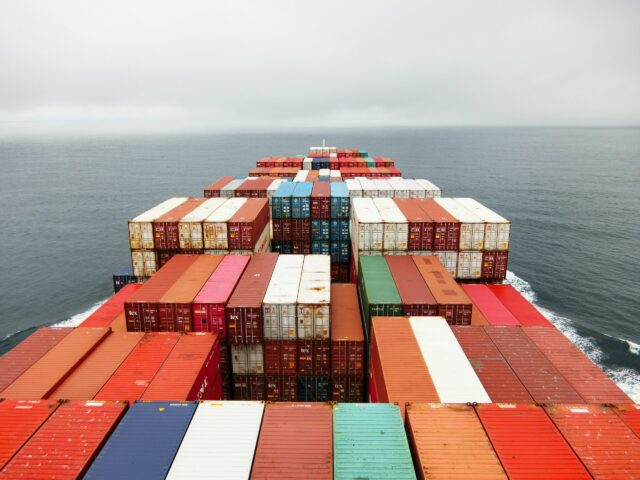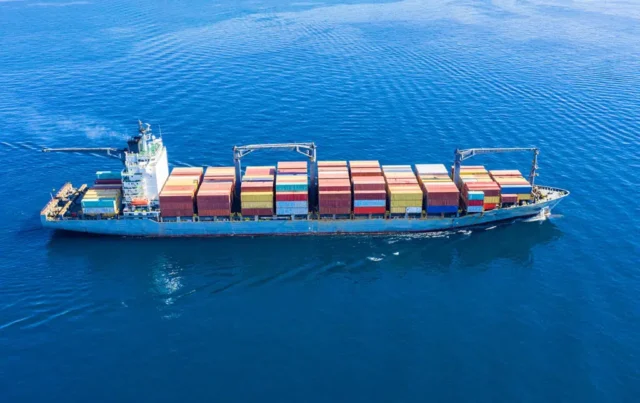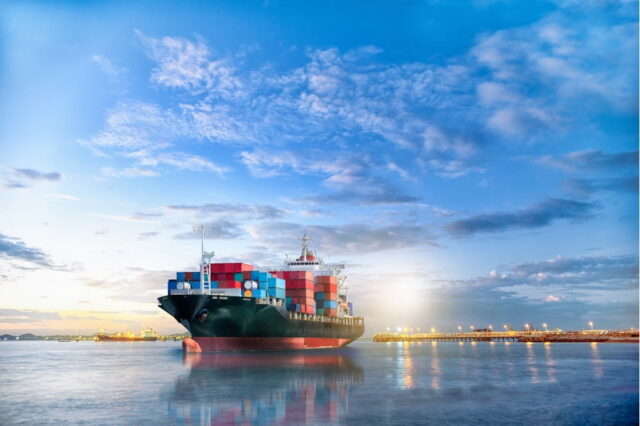International container shipping is the safest way of transportation for a reasonable price. Sea freight FCL and LCL containers are special reusable metal equipment for storing and transporting goods. It is characterized by a robust and reliable design, allowing quick and convenient container loading onto a ship or other truck platform.
Thanks to international standardization, containers for commercial freight shipping differ in size, weight, capacity, functionality, and design features.
What Containers Do International Cargo Services Offer?

By carrying capacity, overseas freight shipping containers are divided into three groups – low-tonnage, medium-tonnage, and large-tonnage. The most common on the market are twenty and forty-foot containers, which differ in carrying capacity and dimensions.
A standard twenty-foot container measures L. 20 ft (5.90 m) x W. 7.8 ft (2.35 m) x H. 7.10 ft (2.39 m) with a volume of 1,200 cu. ft (33 cu. m). This model can carry up to 37,000 lbs (17,000 kg)of cargo. In addition to the standard model, twenty-foot containers are designed as tanks and refrigerators.
A standard forty-foot container measures L. 40 ft (12.03 m) x W. 7.8 ft (2.35 m) x H. 7.10 ft (2.39 m) centimeters and has a volume of 2,400 cu. ft (67 cu. m). It can carry up to 44,000 lbs (20,000 kg). In addition to Open Top and refrigerated trucks, the 40ft range includes High Cube models.
Shipping Routes and Networks

Container shipping routes and networks form the backbone of international trade, facilitating the movement of goods across the globe. These routes connect major ports and hubs, creating an intricate web of transportation and logistics. Understanding shipping routes and networks is crucial for businesses and individuals involved in international trade.
The routes used in container shipping are determined by factors such as geography, trade patterns, and efficiency. The most commonly used routes include transpacific, transatlantic, Asia-Europe, and intra-regional routes. These routes are served by a network of shipping lines that operate vessels specifically designed to carry containers.
Major Ports and Hubs
Major ports and hubs play a vital role in international container shipping, serving as points of origin, transit, and destination for cargo. These ports are equipped with state-of-the-art infrastructure, handling facilities, and logistics services to efficiently manage containerized shipments.
Some of the world’s busiest ports include Shanghai (China), Singapore, Busan (South Korea), Rotterdam (Netherlands), and Los Angeles (United States). These ports serve as key transshipment hubs, connecting various shipping routes and facilitating the transfer of containers between different vessels.
They contribute significantly to the growth of local economies by generating employment opportunities and attracting foreign investments. Furthermore, these ports often implement advanced technologies, such as automated cranes and intelligent cargo tracking systems, to enhance operational efficiency and streamline the movement of goods. Through continuous expansion and modernization efforts, major ports and hubs aim to accommodate larger vessels and handle increasing container volumes, ensuring a smooth flow of international trade.
International Documentation and Regulations

International container shipping involves a range of documentation and regulations to ensure smooth and lawful movement of goods. The main documents required include a bill of lading, commercial invoice, packing list, and customs declaration. These documents provide detailed information about the cargo, its origin, and its destination.
Additionally, various international regulations govern shipping, such as the International Maritime Organization’s (IMO) Safety of Life at Sea (SOLAS) convention, which mandates container weight verification. Customs regulations, including import and export controls, play a crucial role in ensuring compliance with trade laws and security measures.
Customs Clearance and Import/Export Procedures
Customs clearance and import/export procedures are essential aspects of container shipping. When goods cross international borders, they must go through customs checkpoints to comply with the regulations of the importing and exporting countries.
Customs clearance involves documentation verification, payment of duties and taxes, and inspections to ensure compliance with import/export requirements. It is crucial for importers and exporters to work closely with customs brokers or freight forwarders to navigate the complex customs procedures and ensure the smooth release of their goods.
Costs and Pricing Factors

Container shipping costs and pricing factors vary depending on several key elements. These include freight rates, which are determined by factors such as fuel prices, vessel capacity, demand-supply dynamics, and trade imbalances. Other factors that influence costs include port charges, terminal handling fees, customs duties, and transportation costs.
Shipping lines may offer various pricing options, including spot rates and long-term contracts. Additionally, factors such as the type and size of containers, the distance traveled, and any additional services required (e.g., refrigeration or hazardous cargo handling) can impact the overall shipping costs.
Tracking and Security Measures
Container tracking and security measures are vital for ensuring the safe and secure transportation of goods. Advanced tracking systems, such as GPS and RFID technology, enable real-time monitoring of containers throughout their journey. This tracking provides visibility and allows stakeholders to proactively manage their supply chains.
Security measures aim to protect containers from theft, smuggling, and unauthorized access. Tamper-evident seals, security inspections, and specialized container security devices help maintain the integrity of cargo during transit. Additionally, initiatives like the Customs-Trade Partnership Against Terrorism (C-TPAT) promote collaboration between the shipping industry and customs authorities to enhance supply chain security.
Where to Order International Shipping Cargo in Containers?

Meest-USA offers international shipping cargo in containers for short and long distances with minimal time and money. They offer the following conditions, you can check at us.meest.com:
- Worldwide delivery. The company will deliver your cargo as quickly as possible.
- Fair prices. Your comfort is above everything. Meest guarantees you will be satisfied with their professional work!
- Full delivery control. By entrusting your parcels and packages to Meest, you can control all the stages and know precisely where your staff is.
- Personal manager: You always take away all the information about the delivery date from the exceptional manager assigned to you.
- Available 24/7. The company understands your worry about the goods you ship and is ready to answer your messages all day.
Meest will make you the best offer on the market.









